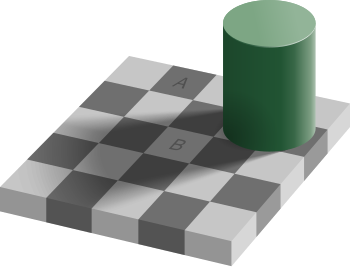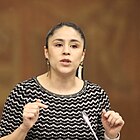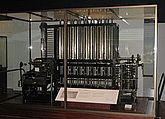From today's featured article
"I've Just Seen a Face" is a Beatles song written and sung by Paul McCartney (pictured), first released on the album Help! in August 1965. A cheerful ballad of love at first sight, it may have been inspired by McCartney's relationship with actress Jane Asher. The Beatles recorded it on 14 June 1965 at EMI Studios in London, on the same day "I'm Down" and "Yesterday" were recorded. The song fuses country and western with other musical genres, including folk rock, folk, pop rock and bluegrass. Several reviewers have described the song in favourable terms, highlighting its rhyming lyricism and McCartney's vocal delivery, and describing it as an overlooked song. It replaced "Drive My Car" on the North American version of Rubber Soul in December 1965, furthering the album's identity as a folk rock work, although some commentators viewed this change as masking the band's late-1965 creative developments. It was among the first Beatles songs McCartney played live with his group Wings. (Full article...)
Did you know ...
- ... that Sofía Sanchez (pictured) loved soccer and she played for a leading Spanish side, but her mother said "study" and she now sits in Ecuador's National Assembly?
- ... that over half a century after Kristallnacht, the Jews of Innsbruck rebuilt their synagogue on the location of the one destroyed that night?
- ... that Eri Yukimura pushed through with a voice acting career partly to prove her late grandmother wrong?
- ... that Seattle radio station KBLE was named in 1963 for a cable car system that had closed nearly 25 years prior?
- ... that the album Topical Dancer was created using four different languages?
- ... that Turkey demanded Mehmet Sıraç Bilgin's extradition in May 2022, seven years after he died in Sweden?
- ... that Prawoto Mangkusasmito did not complete law school before the Japanese invaded because he was too busy with student and political organizations?
- ... that one of the tracks on the deluxe version of Frayed at Both Ends by country musician Aaron Lewis was originally a poem by Johnny Cash?
In the news
- Former Bolivian president Jeanine Áñez (pictured) is sentenced to ten years in prison on charges related to her succession to office during the 2019 political crisis.
- Voters in Kazakhstan pass 56 constitutional amendments in a referendum, following the January 2022 unrest.
- In Nigeria, at least 40 people are killed in an attack at a Catholic church in Owo, Ondo State.
- A fire and explosions at a storage depot in Sitakunda, Bangladesh, kill at least 41 people and injure more than 450 others.
On this day
- 1777 – The Second Continental Congress adopted the stars and stripes design for the flag of the United States.
- 1822 – In a paper presented to the Royal Astronomical Society, English mathematician Charles Babbage proposed a difference engine (pictured), an automatic, mechanical calculator designed to tabulate polynomial functions.
- 1900 – The second of the German Naval Laws was passed, authorising the doubling in size of the Imperial German Navy.
- 1944 – Second World War: The British Army abandoned its attempt to capture the German-occupied city of Caen.
- 1966 – The Vatican formally abolished its 427-year-old list of prohibited books.
- Henry Vane the Younger (d. 1662)
- Karl Landsteiner (b. 1868)
- Mimi Parent (d. 2005)
Today's featured picture

|
The checker shadow illusion is an optical illusion published in 1995 by Edward Adelson, an American professor of vision science at the Massachusetts Institute of Technology. The phenomenon features an image of a checkerboard with light and dark squares, partly shadowed by another object, such as a cylinder as in this illustration. The optical illusion is that the area labeled A appears to be darker than the area labeled B. However, within the context of the two-dimensional image, they are of identical brightness – in other words, they would be printed with identical mixtures of ink, or displayed on a screen with pixels of identical color. Optical illusion credit: Edward Adelson; illustrated by Pbrks
Recently featured:
|
Other areas of Wikipedia
- Community portal – The central hub for editors, with resources, links, tasks, and announcements.
- Village pump – Forum for discussions about Wikipedia itself, including policies and technical issues.
- Site news – Sources of news about Wikipedia and the broader Wikimedia movement.
- Teahouse – Ask basic questions about using or editing Wikipedia.
- Help desk – Ask questions about using or editing Wikipedia.
- Reference desk – Ask research questions about encyclopedic topics.
- Content portals – A unique way to navigate the encyclopedia.
Wikipedia's sister projects
Wikipedia is written by volunteer editors and hosted by the Wikimedia Foundation, a non-profit organization that also hosts a range of other volunteer projects:
-
Commons
Free media repository -
MediaWiki
Wiki software development -
Meta-Wiki
Wikimedia project coordination -
Wikibooks
Free textbooks and manuals -
Wikidata
Free knowledge base -
Wikinews
Free-content news -
Wikiquote
Collection of quotations -
Wikisource
Free-content library -
Wikispecies
Directory of species -
Wikiversity
Free learning tools -
Wikivoyage
Free travel guide -
Wiktionary
Dictionary and thesaurus
Wikipedia languages
This Wikipedia is written in English. Many other Wikipedias are available; some of the largest are listed below.
-
1,000,000+ articles
-
250,000+ articles
-
50,000+ articles



